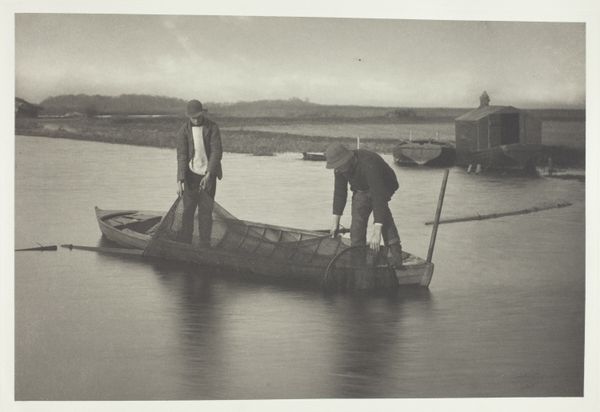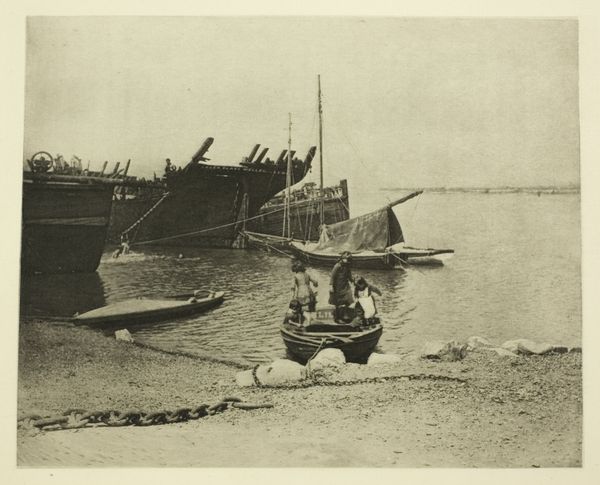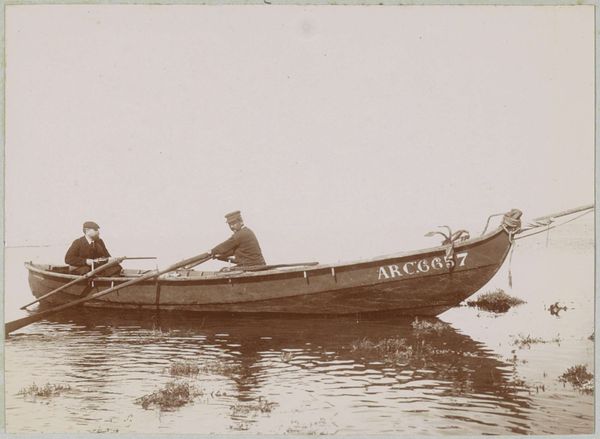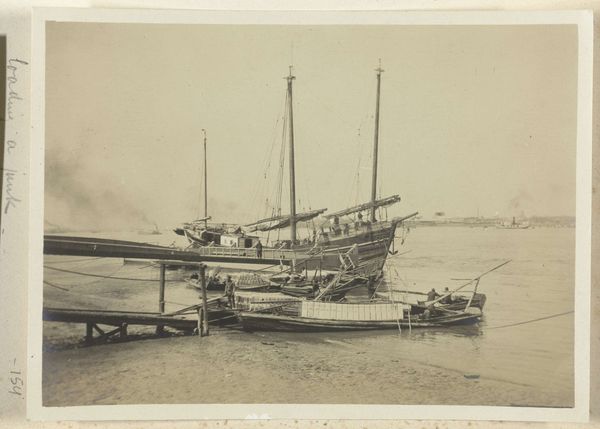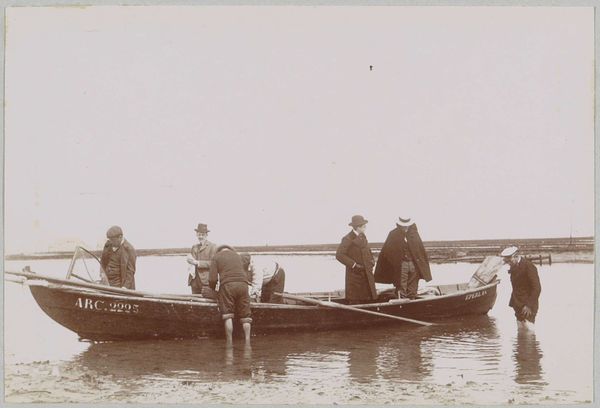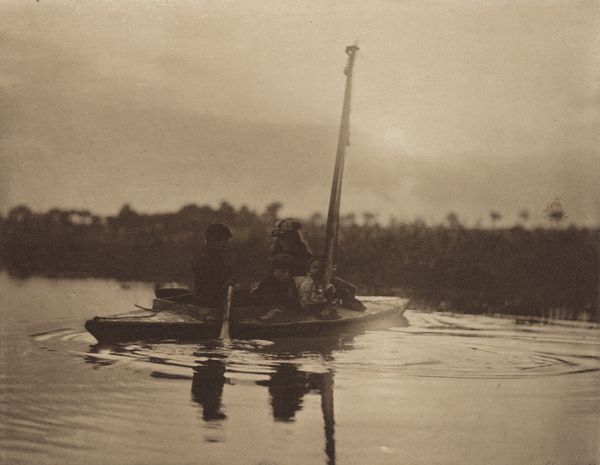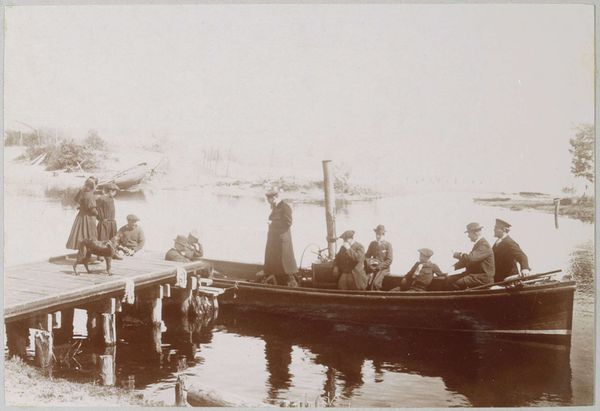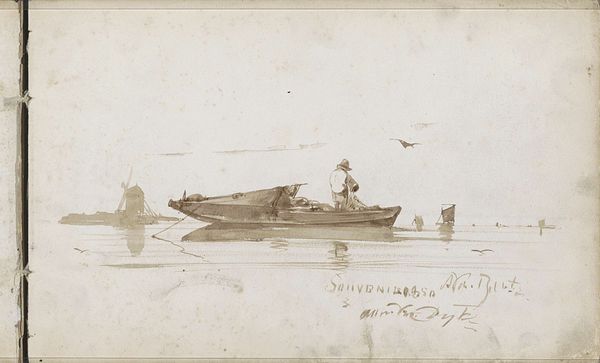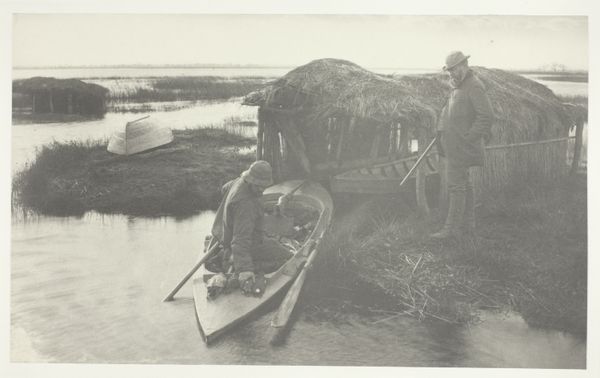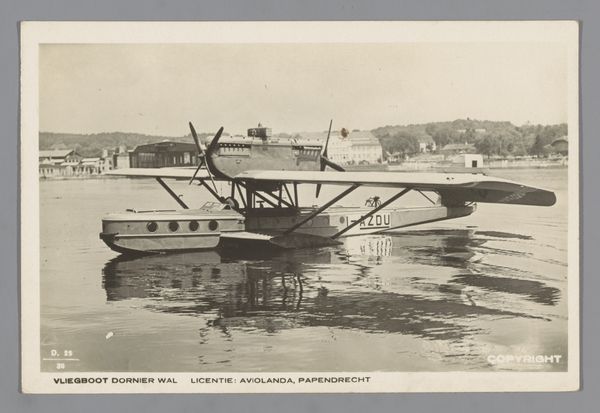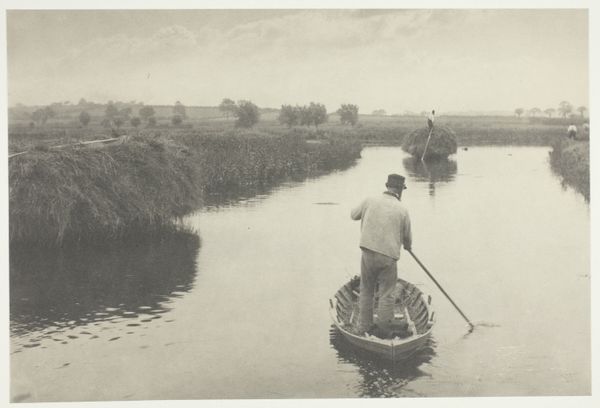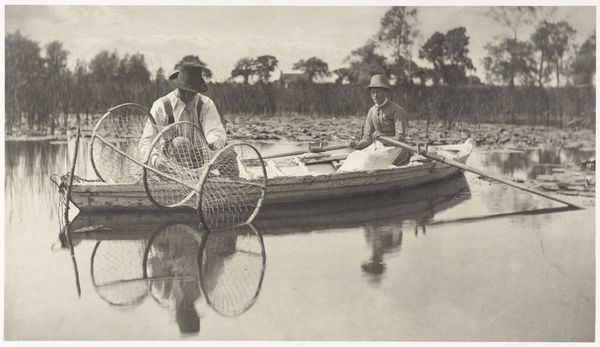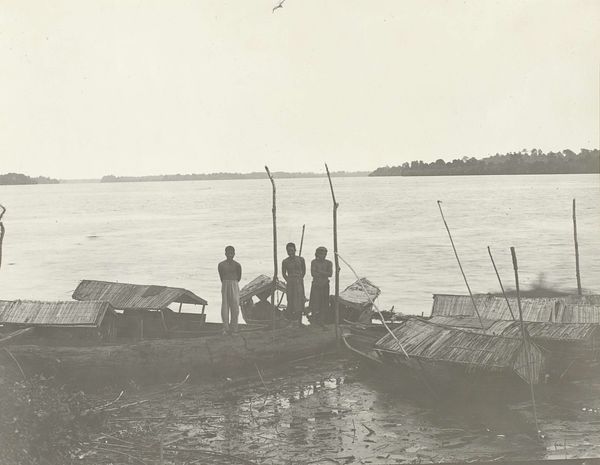
photography
#
16_19th-century
#
pictorialism
#
landscape
#
outdoor photo
#
photography
#
monochrome photography
#
realism
#
monochrome
Dimensions: 22.6 × 27.5 cm (image/paper); 33.2 × 42.4 cm (album page)
Copyright: Public Domain
Curator: Here we have Peter Henry Emerson’s photograph, "A Way Across the Marshes," likely taken between 1883 and 1888. It’s a work currently residing here at the Art Institute of Chicago. Editor: The composition immediately strikes me. The horizontal lines created by the boat and the water give it a profound sense of stillness. Curator: Indeed. The composition utilizes what was called the ‘naturalistic’ style, and also reflects Pictorialism, prioritizing aesthetic effect, particularly tonal range. Emerson manipulates the photographic medium here. Editor: And looking at the man in the boat, his posture and engagement suggest a direct, hands-on relationship with his craft. I’m wondering about the tools and materials they are employing for fishing. The monochrome processing is definitely important, isn't it? Curator: Precisely! Consider the socio-cultural context, here—these marshlands would've sustained entire communities through fishing and wildfowling. The materials visible—the wood of the boat, the simple tools—speak to a practical, unadorned existence intimately connected to nature. We see a rejection of studio artifice here as he tried to show life, unfiltered. Editor: You see the photograph almost functioning as a document of labor itself, a view from the past. But what is the mood of it? This is where aesthetics have an appeal. I notice there’s the way light interacts with the water. It's almost shimmering, giving the scene a soft, contemplative mood. Curator: True, yet that interpretation is contingent on photographic rendering itself, it requires considering how the photographic print transforms material reality into symbolic form. Emerson wanted photography considered fine art and used processes of manipulation to achieve the subtle tonal effects. That can then, by design, impact how the image feels to us today. Editor: So you have both a historical document that showcases real working people while at the same time showcasing his control as an artist of technique and photographic method. It's quite an amazing and skillful use of light! I appreciate understanding better what to look for. Curator: And seeing the work from the view of how lives depended on material conditions definitely creates interesting entry points for future scholars.
Comments
No comments
Be the first to comment and join the conversation on the ultimate creative platform.
